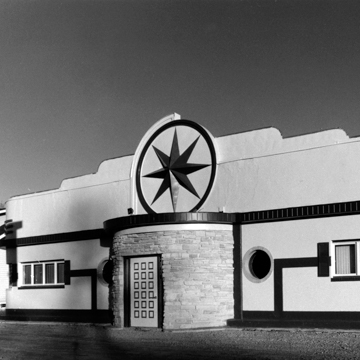Nightclubs and restaurants prospered during the 1930s and 1940s, despite economic depression and wartime rationing. The repeal of Prohibition in 1933 opened the door for new nightclubs and fancy dining establishments. Many of these new restaurants attracted customers by taking on an exotic theme. California led the way, with the Polynesian-styled Trader Vic’s (1937) in San Francisco. By the early 1940s, every major city had at least one posh supper club of its own. In Pembine, the Port Supper Club displayed the glamour that typified many restaurants of that era. It opened on New Year’s Eve 1941 and quickly became popular with servicemen, who stopped on their way to and from military stations in northern Wisconsin, and later with tourists vacationing in the Northwoods.
The Port assumed a nautical theme. The streamlined Moderne design with porthole windows and sleek curved-corner walls suggests the form of a passenger ship. A parapet steps up above the center bay to evoke a steamer’s superstructure. The parapet is punctuated by a metal arc resembling a davit, or small crane from which a lifeboat might hang, which partially curves around an eight-point compass rose, such as might be found on a navigational chart. At one time, a miniature lighthouse soared above the one-story building. The curved entrance vestibule formed the lighthouse’s base. Trios of speed lines and glass block windows run around the building’s corners, and a dark-colored coping wraps the building. The interior features glass etched with fish motifs.


